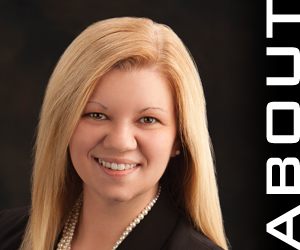Corporate Minded | Spring 2018
A Growing Career, A Growing Family
Here is how I found work-life balance in corporate finance.

Amanda L. Gavin, CPA, MBA
Manager, Global Tax & Trade, Caterpillar Inc.
Succeeding in the Corporate Finance World
I often get asked how I do it. “It” being growing my career while growing my family. We
all know managing commitments outside of our corporate finance careers can be
challenging. Well, my current commitments include nine-year-old twin sons, a four-year-old
daughter, a husband in college, and other professional and community involvement
that keeps my life very full and rewarding!
What you may find interesting about this is that a year after my twins were born, realizing
life was only going to become fuller, I decided it was time to become a CPA. With no extra
time from sunrise to sunset, I had to create a schedule that would realistically let me pass
the CPA exam within a year. The term “burning the midnight oil” took on a whole new
meaning for me, as I am sure it has for you at least once or twice before.
Fast-forward to where I am today, and I will be the first to admit that maintaining
work-life balance is very difficult and requires a lot of planning and communication. It is
especially challenging to rebalance after a period of change — like when you have
children or experience a major career change. While reflecting on these changes in my
life, I realized four primary moves have always helped me find a healthy work-life
balance. So, here’s how I do it.
SET A SCHEDULE
No matter your involvements and commitments inside and outside of the office, each one
should be a priority. The best way I have found to keep these balanced is to set a regular
work schedule where I begin and end on time. While it is not always possible to end “on
time,” especially when working with others, it is an important goal to work towards.
A good piece of advice I was given is to unapologetically let others know when I have a
hard stop. When a meeting looks like it may run long, and I need to leave to pick up my
kids, I make it a point to state that I have a prior commitment and need to leave at “X”
time. I have found this helps keep work and meetings on target and serves as a reminder
to all that setting priorities is important regardless of what they relate to.
PLAN FOR BUSY SEASONS
Whenever possible, try to anticipate your high demand periods and plan accordingly. For
me, I know tax season is going to be demanding; so, I look ahead at school calendars and
my children’s activities and adjust my work availability as needed. For instance, I will plan to go in earlier than usual on a day when
I know I need to leave earlier than usual.
Planning ahead has especially proven its
worth when scheduling meetings at work
and with volunteer groups. Let me tell you,
it is much easier to schedule around
everyone’s availability up front versus
risking missing an important event later.
When possible, I also try to get ahead in
my volunteer work or avoid committing to
activities that fall within my busier times.
This approach has helped me avoid
becoming overwhelmed and burned out
when conflicting demands arise.
COMMUNICATE INTENTIONALLY
A friend of mine regularly shares a great
George Bernard Shaw quote: “The single
biggest problem in communication is the
illusion that it has taken place.”
I cannot stress enough how important it is
to communicate at work, at home, and
wherever your other commitments lead
you. If I am going to work late, for example,
I openly talk about it with my family
to try to ensure there are no surprises.
Communication needs to be intentional,
especially when you are trying to maintain
any semblance of work-life balance.
FIND FLEXIBILITY
Today’s workforce culture demands flexibility,
but it is important to keep in mind
that flexibility does not always mean
working part-time hours; it means working
smarter hours.
For many of us in accounting and finance
professions, working additional hours
during busy periods cannot be avoided,
but I encourage you to consider when and
where those tasks and extra hours can be
completed. Myself and many employees
I work with plan our workdays around our
children’s schedules. My friend Jennifer,
who works at a firm in St. Louis, is in the
office the same hours most days, arriving
by 8 a.m. and leaving by 5 p.m. But,
during her busier times, she continues to
leave on time and then works from
home after her children go to bed. Her
schedule is consistent and allows for the
opportunity to prioritize both her career
and her family.
It often seems that we must choose
between our personal or professional
goals and commitments, but I have seen
otherwise. With the right moves, each one
can be a priority, and you can have real
work-life balance.